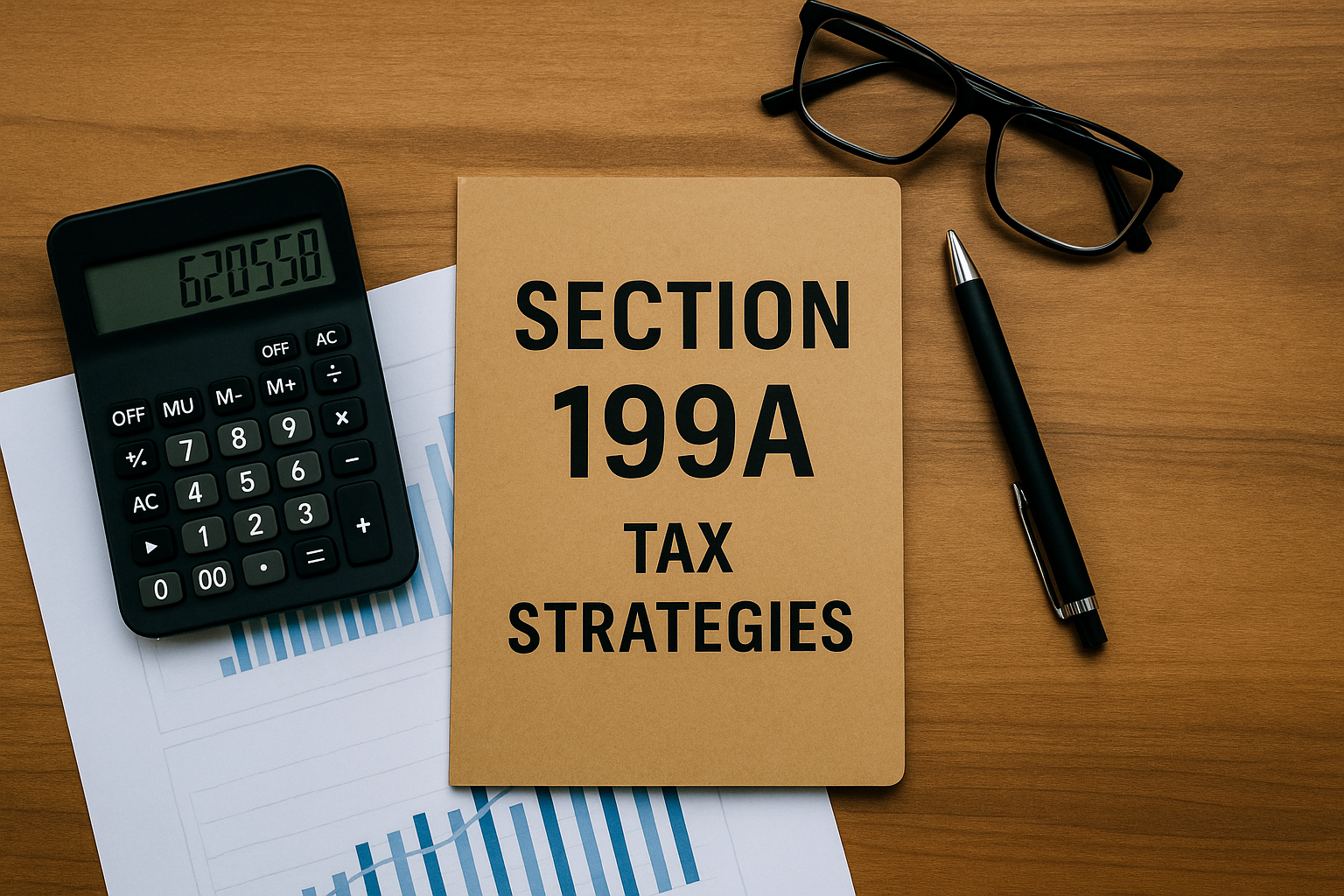
With everything happening in 2025, it’s easy to overlook one of the most valuable tax breaks available to small business owners: the Section 199A deduction.
The Tax Cuts and Jobs Act (TCJA) originally introduced Section 199A as a simple, do-nothing 20 percent deduction for many pass-through businesses based on qualified business income (QBI). The One Big Beautiful Bill Act (OBBBA) then made this deduction permanent, turning Section 199A into a long-term planning opportunity.
If your qualified business income is $100,000 and your taxable income is also $100,000, you receive a $20,000 deduction automatically. No elections, no forms, no special planning.
But—here’s the twist:
Certain tax strategies that reduce taxable income can also reduce your Section 199A deduction. For example, if you expense $40,000 of equipment, your QBI drops from $100,000 to $60,000, and your 199A deduction drops from $20,000 to $12,000.
The need for careful planning becomes much more important once taxable income passes the 2025 thresholds: $197,300 single or $394,600 joint.
Below are three high-impact Section 199A year-end strategies you can use before December 31, 2025 to protect—or even increase—your deduction.
If your taxable income exceeds the threshold amount, Section 199A rules get more complex. Your deduction may depend on:
In this range, the Section 199A deduction becomes limited, reduced, or eliminated depending on the mix of these factors.
To simplify your planning, use the 2025 Section 199A calculator and carefully review how QBI, wages, property, and taxable income interact.
If your deduction is falling below 20 percent of QBI, the strategies below can help.
Capital gains increase your taxable income, and higher taxable income can push you into a range where Section 199A begins to phase out or disappear.
By harvesting capital losses before year-end, you can:
Susan is single. She has:
Because she is above the threshold, her Section 199A deduction is reduced to $10,920.
If Susan harvests $40,000 of capital losses from her portfolio, her taxable income falls to $180,000—below the threshold. Her Section 199A deduction then jumps to $20,000.
Her combined tax benefit:
Total benefit: $8,179
This is why using capital losses strategically can dramatically improve your 199A outcome.
Section 199A thresholds are based on taxable income, so increasing your itemized deductions can restore or expand your deduction.
The easiest way to boost itemized deductions before year-end is through charitable giving, especially in two ways:
Suppose Susan (from above) decides not to harvest losses. Instead, she donates $40,000 of appreciated stock with a built-in long-term gain of $35,000.
Her itemized deductions increase by $40,000, lowering her taxable income by the same amount.
Her benefits:
Total tax advantage: $19,595
This simple move produces major savings while supporting a charitable cause.
Bonus depreciation and Section 179 allow you to fully deduct many business assets placed in service before December 31, 2025.
A well-timed equipment purchase can help your Section 199A deduction in two ways:
If you are just above the limit, a business asset write-off can drop you underneath it—restoring the 199A deduction.
If your 199A deduction is limited by wages/UBIA (common for high-income taxpayers), purchasing qualified property increases your UBIA and boosts your deduction.
Jim (single) operates an S corporation medical practice. He has:
He is above the upper 199A limit for specified service businesses, so his 199A deduction is $0.
If Jim buys and expenses $50,000 of medical equipment before year-end:
Total tax benefit: $23,986
A purchase Jim planned to make anyway now produces powerful 199A leverage.
If your taxable income exceeds $197,300 (single) or $394,600 (joint) in 2025, your Section 199A deduction may shrink or disappear.
The three strategies in this article help restore or maximize the deduction:
If capital gains are pushing you over the threshold, harvest losses to reduce taxable income and increase your 199A deduction.
Boost itemized deductions with appreciated stock or prepaid donations to get under the threshold and improve your deduction.
Using bonus depreciation or Section 179 before December 31 can lower taxable income and potentially increase your UBIA-based deduction.
Done correctly, these strategies can turn an ordinary year-end into a powerful tax-saving opportunity.